mathmetician

 I’m told that the Sun weighs 2,000 million million million million tons. That if course, sounds very heavy, and I suppose it could be fairly accurate. Nevertheless, for me these questions arise. How do they know the weight of the Sun? Who was it that somehow managed to go out there and weight the Sun? And where did they get a scale big enough to set the Sun on to get this very accurate sounding weight? Ok, I’m being sarcastic, but then again, these are legitimate questions. I’m told that there is a formula they use to figure the mass of a planet.
I’m told that the Sun weighs 2,000 million million million million tons. That if course, sounds very heavy, and I suppose it could be fairly accurate. Nevertheless, for me these questions arise. How do they know the weight of the Sun? Who was it that somehow managed to go out there and weight the Sun? And where did they get a scale big enough to set the Sun on to get this very accurate sounding weight? Ok, I’m being sarcastic, but then again, these are legitimate questions. I’m told that there is a formula they use to figure the mass of a planet.
First one has to calculate the mass of the Sun. There are apparently several ways to do so. One way is to use Kepler’s third law: “M = 4r³?²/T²G, where r is the distance between the Earth and the Sun, T is the time it takes for the Earth to orbit the Sun, and G is the gravitational constant. The mass of the Sun is about 2×10³? kg.” Another way is to use the mass formula: “Mass = Density x Volume. The mass of the Sun’s core is estimated to be 3.0 x 10³¹ kg, and the mass of the outer shell is estimated to be 1.1 x 10³¹ kg.” The third way is to “divide the total mass by 1.98855 times 10 to the 30th power.” From what I can see, the common methos is the Kepler’s third law. Once you have that figured, you are ready for the next step…the weight of the Sun.
That process is as complicated as, or nearly as complicated as the methods to figure the mass of the Sun. Apparently, it all has to do with the mass of the Sun, the mass of the Earth, the gravitational pull on the Earth by the Sun, and the distance between the two squared. Or more scientifically written, “The gravitational attraction between the Earth and the sun is G times the sun’s mass times the Earth’s mass, divided by the distance between the Earth and the sun squared. This attraction must be equal to the centripetal force needed to keep the earth in its (almost circular) orbit around the sun.” If that makes perfect sense to you, then you are 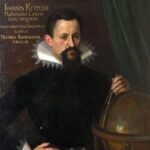
 likely a better scientist or mathematician than the average person. So even if I could fully understand that process, and I don’t, I still have to ask one question, where is the proof that its true and accurate. I realize that there is no way to definitively prove the weight of the Sun, the Earth, or any other planet, and maybe this is somehow he most accurate guess possible. I don’t know, but maybe they should say that the Sun weighs approximately 2,000 million million million million tons. At least, that would stop such silly questions from people like me.
likely a better scientist or mathematician than the average person. So even if I could fully understand that process, and I don’t, I still have to ask one question, where is the proof that its true and accurate. I realize that there is no way to definitively prove the weight of the Sun, the Earth, or any other planet, and maybe this is somehow he most accurate guess possible. I don’t know, but maybe they should say that the Sun weighs approximately 2,000 million million million million tons. At least, that would stop such silly questions from people like me.
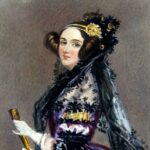 It seems odd that the daughter of a poet would be an excellent mathematician, but each person has their own gift, and it may or may not be anything like our parents. Being the daughter of a poet, in this case, Lord Byron (George Gordon Byron), it may have seemed unlikely for Ada Byron to be a mathematician, but her mother was Lady Byron (Anne Isabella Milbanke)…a mathematician. So, there you have it…two women in the 1800s who were good at mathematics. To top it off, it was uncommon for women to go very high in education in those days, much less for the aristocrat set. Women were usually trained for things like running a household and raising children…and maybe the occasional schoolteacher.
It seems odd that the daughter of a poet would be an excellent mathematician, but each person has their own gift, and it may or may not be anything like our parents. Being the daughter of a poet, in this case, Lord Byron (George Gordon Byron), it may have seemed unlikely for Ada Byron to be a mathematician, but her mother was Lady Byron (Anne Isabella Milbanke)…a mathematician. So, there you have it…two women in the 1800s who were good at mathematics. To top it off, it was uncommon for women to go very high in education in those days, much less for the aristocrat set. Women were usually trained for things like running a household and raising children…and maybe the occasional schoolteacher.
Ada Byron was the only child of Lord and Lady Byron. He had other children, but they were born out of wedlock to other women. The truth is that Ada’s mathematical prowess wasn’t an accident…it was a calculated plan by her mother, and one to which Adad didn’t object. A month after Ada was born, her parents separated, and Byron left England forever, and caused Ada’s mother to be very bitter. He wrote a poem, commemorating the parting, four months later. The poem begins, “Is thy face like thy mother’s my fair child! ADA! sole daughter of my house and heart?” When Ada was eight years old, her father died in Greece. Ada’s mother, who had never forgiven Lord Byron for leaving, remained bitter against him, even in death. In retaliation for his unfaithfulness, she promoted Ada’s interest in mathematics and logic in an effort to prevent her from developing her father’s perceived “insanity.” Nevertheless, Ada’s mother could not curb her daughter’s curiosity about her father. She remained interested in him for the rest of her life, but probably had to keep her curiosity to herself. When Ada had children of her own, she named one of her sons Byron, after her father. She also made it clear that when she died, she was to be buried next to her father, and upon her death, her request was honored.
Ada’s childhood was a hard one, because she was often ill. Still, Ada pursued her studies with great care, and  she persevered even in times of illness. I think that like her mother, she preferred logic and mathematics to poetry all along. At the age of 17 Ada was introduced to Mary Somerville, a remarkable woman who translated Pierre-Simon LaPlace’s works into English, and whose texts were used at Cambridge. Pierre-Simon, marquis de Laplace was a French scholar and polymath whose work was important to the development of engineering, mathematics, statistics, physics, astronomy, and philosophy. Though Somerville encouraged Ada in her mathematical studies, she also attempted to put mathematics and technology into an appropriate human context. It was at a dinner party at Somerville’s home that Ada heard in November 1834, about Babbage’s ideas for a new calculating engine, the Analytical Engine. His thought was, “what if a calculating engine could not only foresee but could act on that foresight?” Ada was impressed by the “universality of his ideas.” She was pretty much alone in her interest.
she persevered even in times of illness. I think that like her mother, she preferred logic and mathematics to poetry all along. At the age of 17 Ada was introduced to Mary Somerville, a remarkable woman who translated Pierre-Simon LaPlace’s works into English, and whose texts were used at Cambridge. Pierre-Simon, marquis de Laplace was a French scholar and polymath whose work was important to the development of engineering, mathematics, statistics, physics, astronomy, and philosophy. Though Somerville encouraged Ada in her mathematical studies, she also attempted to put mathematics and technology into an appropriate human context. It was at a dinner party at Somerville’s home that Ada heard in November 1834, about Babbage’s ideas for a new calculating engine, the Analytical Engine. His thought was, “what if a calculating engine could not only foresee but could act on that foresight?” Ada was impressed by the “universality of his ideas.” She was pretty much alone in her interest.
In 1835, she married William King, who was made Earl of Lovelace in 1838. With that, Ada became Countess of Lovelace. Many would think that would have been the end of her mathematical career, but Augusta Ada King, Countess of Lovelace was first an English mathematician and writer. Babbage worked on plans for this new engine and reported on the developments at a seminar in Turin, Italy in the autumn of 1841. An Italian, named Menabrea, wrote a summary of what Babbage described and published an article in French about the development. By 1843, Ada, now the married mother of three children (Byron, Anne, and Ralph) under the age of eight, translated Menabrea’s article. When she showed Babbage her translation, he suggested that she should add her own notes to the translation, which turned out to be three times the length of the original article. Letters filled with fact and fantasy flew back and forth between Babbage and Ada. In her article, published in 1843, Lady Lovelace’s prescient comments included her predictions that such a machine might be used to compose complex music, to produce graphics, and would be used for both practical and scientific use. 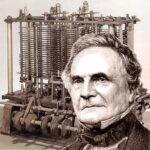 While the world thought that just wishful thinking, Ada was correct. In fact, she published the first algorithm intended to be carried out by such a machine. When inspired Ada could be very focused and a mathematical taskmaster. She suggested to Babbage writing a plan for how the engine might calculate Bernoulli numbers. This plan is now seen as the first “computer program” and as a result, she is often regarded as the first computer programmer. A software language developed by the US Department of Defense was named “Ada” in her honor in 1979. Ada Lovelace, died on November 27, 1852, after battling with Uterine Cancer. Like her father, she died young, at the same age he had…36 years old. Ada was abandoned by her husband because of cancer shortly before her death…what a creep he was!!
While the world thought that just wishful thinking, Ada was correct. In fact, she published the first algorithm intended to be carried out by such a machine. When inspired Ada could be very focused and a mathematical taskmaster. She suggested to Babbage writing a plan for how the engine might calculate Bernoulli numbers. This plan is now seen as the first “computer program” and as a result, she is often regarded as the first computer programmer. A software language developed by the US Department of Defense was named “Ada” in her honor in 1979. Ada Lovelace, died on November 27, 1852, after battling with Uterine Cancer. Like her father, she died young, at the same age he had…36 years old. Ada was abandoned by her husband because of cancer shortly before her death…what a creep he was!!
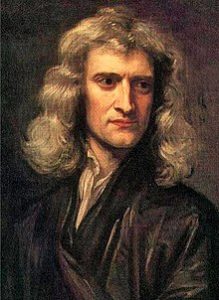 Most of us think of Isaac Newton for things like Newtonian mechanics, Universal gravitation, Calculus, Newton’s laws of motion, Optics, Binomial series, Principa, and Newton’s method…ok, maybe not, I doubt if most of us know what most of that means, but we knew that he was a great mathematician. Newton was an English mathematician, but he was also a physicist, astronomer, theologian, and author who is widely recognized as one of the most influential scientists of all time, and a key figure in the scientific revolution.
Most of us think of Isaac Newton for things like Newtonian mechanics, Universal gravitation, Calculus, Newton’s laws of motion, Optics, Binomial series, Principa, and Newton’s method…ok, maybe not, I doubt if most of us know what most of that means, but we knew that he was a great mathematician. Newton was an English mathematician, but he was also a physicist, astronomer, theologian, and author who is widely recognized as one of the most influential scientists of all time, and a key figure in the scientific revolution.
Politically and personally, Newton was tied to the Whig party, an early version of the Republican Party. He served two brief terms as Member of Parliament for the University of Cambridge, in 1689-1690 and 1701-1702. He was noted by Cambridge diarist Abraham de la Pryme to have rebuked students who were frightening locals by claiming that a house was haunted. Newton moved to London to take up the post of warden of the Royal Mint in 1696, a position that he had obtained through the patronage of Charles Montagu, 1st Earl of Halifax, then Chancellor of the Exchequer. He took charge of England’s great recoining, trodden on the toes of Lord Lucas, Governor of the Tower, and secured the job of deputy comptroller of the temporary Chester branch for Edmond Halley. Newton became perhaps the best-known Master of the Mint upon the death of Thomas Neale in 1699. It was a position Newton held for the last 30 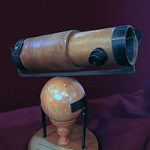 years of his life, and one of which he was very proud. These appointments were intended as type of figurehead position, but Newton took his job seriously. He retired from his Cambridge duties in 1701, and exercised his authority to reform the currency and punish clippers and counterfeiters. As Warden, and afterwards as Master, of the Royal Mint, Newton estimated that 20% of the coins taken in during the Great Recoinage of 1696 were counterfeit. Counterfeiting was high treason, which was punishable by the felon being hanged, drawn, and quartered. Despite that, it would be very difficult to convict even the most flagrant criminals. Nevertheless, Isaac Newton proved to be equal to the task.
years of his life, and one of which he was very proud. These appointments were intended as type of figurehead position, but Newton took his job seriously. He retired from his Cambridge duties in 1701, and exercised his authority to reform the currency and punish clippers and counterfeiters. As Warden, and afterwards as Master, of the Royal Mint, Newton estimated that 20% of the coins taken in during the Great Recoinage of 1696 were counterfeit. Counterfeiting was high treason, which was punishable by the felon being hanged, drawn, and quartered. Despite that, it would be very difficult to convict even the most flagrant criminals. Nevertheless, Isaac Newton proved to be equal to the task.
Disguised as a frequent patron of bars and taverns, he gathered much of that evidence himself. For all the barriers placed to prosecution, and separating the branches of government, English law still had ancient and formidable customs of authority. Newton had been made a justice of the peace in all the home counties. A draft letter regarding the matter is included in Newton’s personal first edition of Philosophiæ Naturalis Principia Mathematica, which he must have been amending at the time. Then he conducted more than 100 cross-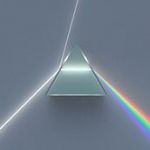 examinations of witnesses, informers, and suspects between June 1698 and Christmas 1699. Newton successfully prosecuted 28 coiners. In April 1705, Queen Anne knighted Newton during a royal visit to Trinity College, Cambridge. The knighthood is likely to have been motivated by political considerations connected with the Parliamentary election in May 1705, rather than any recognition of Newton’s scientific work or services as Master of the Mint. Newton was the second scientist to be knighted, after Sir Francis Bacon. Newton died in his sleep in London on 20 March 1727. His body was buried in Westminster Abbey. A bachelor all his life, Newton had distributed much of his estate to relatives during his last years, and in the end, he died intestate. That seems, to me, a sad ending to an extraordinary life.
examinations of witnesses, informers, and suspects between June 1698 and Christmas 1699. Newton successfully prosecuted 28 coiners. In April 1705, Queen Anne knighted Newton during a royal visit to Trinity College, Cambridge. The knighthood is likely to have been motivated by political considerations connected with the Parliamentary election in May 1705, rather than any recognition of Newton’s scientific work or services as Master of the Mint. Newton was the second scientist to be knighted, after Sir Francis Bacon. Newton died in his sleep in London on 20 March 1727. His body was buried in Westminster Abbey. A bachelor all his life, Newton had distributed much of his estate to relatives during his last years, and in the end, he died intestate. That seems, to me, a sad ending to an extraordinary life.
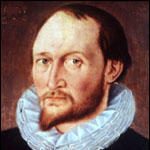 These days, since man has already been on the moon, I don’t suppose the scientists would feel the same excitement about seeing it through a telescope that they felt the first time they looked at it through a telescope. I’m sure that the creation of a map of the moon was an amazing accomplishment back in the 1600s. The earliest known telescope was built in 1608 in the Netherlands when an eyeglass maker named Hans Lippershey tried to obtain a patent on one. Although Lippershey did not receive his patent, news of the new invention soon spread across Europe. The design of these early refracting telescopes consisted of a convex objective lens and a concave eyepiece. The world was headed for a new and exciting journey that would someday put man in space and on the moon.
These days, since man has already been on the moon, I don’t suppose the scientists would feel the same excitement about seeing it through a telescope that they felt the first time they looked at it through a telescope. I’m sure that the creation of a map of the moon was an amazing accomplishment back in the 1600s. The earliest known telescope was built in 1608 in the Netherlands when an eyeglass maker named Hans Lippershey tried to obtain a patent on one. Although Lippershey did not receive his patent, news of the new invention soon spread across Europe. The design of these early refracting telescopes consisted of a convex objective lens and a concave eyepiece. The world was headed for a new and exciting journey that would someday put man in space and on the moon.
Thomas Harriot was a mathematician and astronomer who founded the English School of Algebra. He is described by some as “the greatest mathematician that Oxford has produced,” yet only recently has his name become widely known, and even now his achievements are not fully appreciated by most mathematicians. I’m sure he was an amazing mathematician, but it is his work in astronomy that interests me. As an undergraduate at Oxford, Harriot was a student at St Mary’s Hall. Harriot graduated in 1580 and went to London.
We know from manuscripts, belonging to Harriot, that he was engaged in deep studies of optics at Syon by  1597. Although in his manuscripts it states that he had discovered the sine law of refraction of light before 1597. The precise date of Harriot’s important discovery was July 1601. As with all his other mathematical discoveries, however, Harriot did not publish his findings. It is somewhat ironic, that Snell…to whom the discovery of this law is now attributed…was not the first to publish the result. Snell’s discovery was in 1621, about 20 years after Harriot’s discovery, but the result was not published until Descartes put it in print in 1637. He considered more complex systems and employed Christopher Tooke as a lens grinder from early 1605. His work on light now moved to the dispersion of light into colors. He began to develop a theory for the rainbow By 1606, Johannes Kepler had heard of the remarkable results on optics achieved by Harriot. Kepler wrote to Harriot, but the correspondence never really achieved any significant exchange of ideas. Perhaps Harriot was too wary of the difficulties that his work had nearly brought on him, or perhaps he did, as he claimed to Kepler, still intend to publish his results.
1597. Although in his manuscripts it states that he had discovered the sine law of refraction of light before 1597. The precise date of Harriot’s important discovery was July 1601. As with all his other mathematical discoveries, however, Harriot did not publish his findings. It is somewhat ironic, that Snell…to whom the discovery of this law is now attributed…was not the first to publish the result. Snell’s discovery was in 1621, about 20 years after Harriot’s discovery, but the result was not published until Descartes put it in print in 1637. He considered more complex systems and employed Christopher Tooke as a lens grinder from early 1605. His work on light now moved to the dispersion of light into colors. He began to develop a theory for the rainbow By 1606, Johannes Kepler had heard of the remarkable results on optics achieved by Harriot. Kepler wrote to Harriot, but the correspondence never really achieved any significant exchange of ideas. Perhaps Harriot was too wary of the difficulties that his work had nearly brought on him, or perhaps he did, as he claimed to Kepler, still intend to publish his results.
The appearance of a comet attracted Harriot’s attention and turned his scientific mind towards astronomy. He observed a comet on September 17, 1607 from Ilfracombe which would later be identified as Halley’s Comet.  Kepler had discovered the comet six days earlier, but it would be the observations of Harriot and his friend…and student, William Lower which eventually were used by Friedrich Wilhelm Bessel to compute its orbit. His astronomy was now back in the forefront of his mind, and Harriot went on to make the earliest telescopic observations in England. On July 26, 1609 at 9pm, he sketched the Moon, after viewing it through a telescope with a magnification of 6. He sketched the Moon again a year later on July 17, 1610, by this time he had a telescope giving him a magnification of 10. Soon he had constructed a telescope with a magnification of 20, then by April 1611 he had a 32 magnification telescope. While mapping the moon might seem to some like a minor achievement, it inspired him to continuously improve the telescope.
Kepler had discovered the comet six days earlier, but it would be the observations of Harriot and his friend…and student, William Lower which eventually were used by Friedrich Wilhelm Bessel to compute its orbit. His astronomy was now back in the forefront of his mind, and Harriot went on to make the earliest telescopic observations in England. On July 26, 1609 at 9pm, he sketched the Moon, after viewing it through a telescope with a magnification of 6. He sketched the Moon again a year later on July 17, 1610, by this time he had a telescope giving him a magnification of 10. Soon he had constructed a telescope with a magnification of 20, then by April 1611 he had a 32 magnification telescope. While mapping the moon might seem to some like a minor achievement, it inspired him to continuously improve the telescope.

